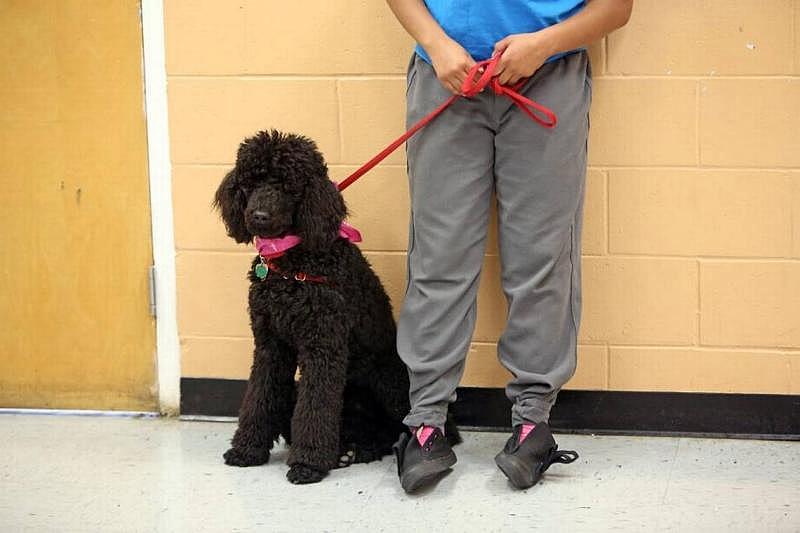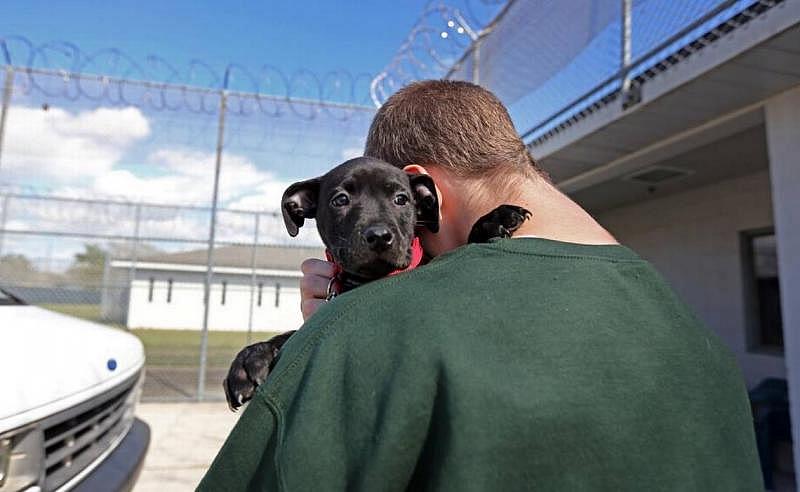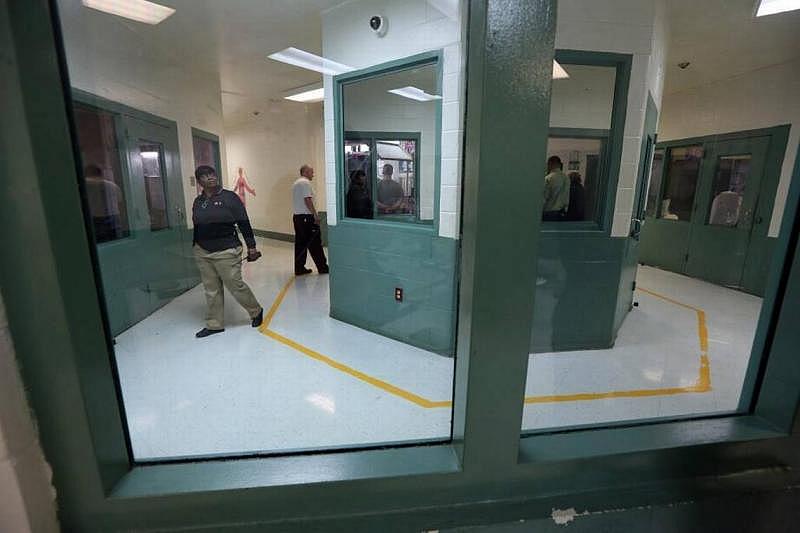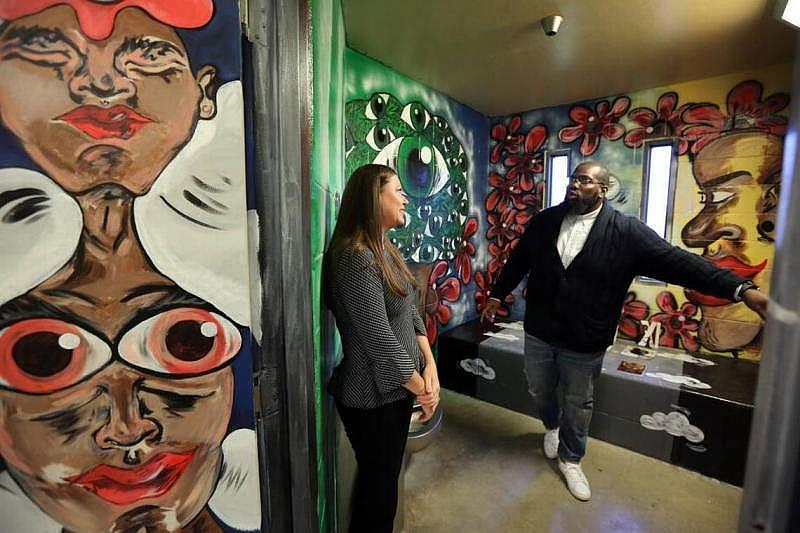How NYC and Missouri are reforming juvenile justice — without razor wire fences
This article and others in this series were produced as part of a project for the University of Southern California Center for Health Journalism’s National Fellowship, in conjunction with the USC Annenberg School for Communication and Journalism.
Other stories in the series include:
Powerful lawmaker calls for juvenile justice review in wake of Herald series
Juvenile justice chief defends agency, calling abuses ‘isolated events’
An officer used a broom to beat juveniles into submission. They called it ‘Broomie.’
NAACP demands reform as lawmakers plan tour of lockup where youth was fatally beaten
Criminal record? Horrible work history? Florida juvenile justice would still hire you
At this juvenile justice program, staffers set up fights — and then bet on them
Dark secrets of Florida juvenile justice: ‘honey-bun hits,’ illicit sex, cover-ups
Lightning blasted his shoes off — and illuminated a pattern of abuse by staff
How small rebellions by Florida delinquents snowball into bigger beatings by staff
FIGHTCLUB: A Miami Herald investigation into Florida’s juvenile justice system

New York City, like Missouri and many other places, is trying to reform delinquent youths without treating them like hardened felons. Emily Michot
NEW YORK — In a quiet working-class neighborhood in southwest Queens, amid a canopy of mature red oak, inside a brick converted church rectory, beyond a threshold of mosaic tile, live five juvenile delinquents.
They sleep in beds with plaid quilts, not on metal slabs.
The walls are painted yellow, blue and green, not institutional gray.
They eat on a wooden dining room table, not on steel bolted to the floor.
There are no food fights here. If a boy is hungry, he asks for seconds.

The group home — run by a century-old human services agency with roots as a charity for sick children — has virtually nothing in common with with the razor-wire fortresses that house many of Florida’s youthful offenders. Juvenile justice administrators in New York designed it that way.
“The deprivation of liberty is the punishment,” said Gladys Carrion, who retired in February after working four years as commissioner of New York City’s Administration for Children’s Services. She was the head of the state Office of Children and Family Services for six years before that.
“They go back into their communities,” she said. “You have to treat them like human beings. Like they matter. Like they have promise.”
“Everyone is entitled to a second chance. Giving up on them and treating them like criminals so they will come out hardened and have no hope and no expectations of a future — we don’t, as a society, have the luxury to do that.”
Tragedies and struggles
Contrasting youth justice programs such as New York City’s with most others, a 2016 U.S. Justice Department report said of the latter: “Whether they are called ‘training schools’ or ‘youth centers,’ nearly all of these facilities are youth prisons.” The report of the National Institute of Justice, research arm of the Justice Department, added: “This ill-conceived and outmoded approach is a failure, with high costs and recidivism rates and institutional conditions that are often appalling.
“Every youth prison in the country should be closed, and replaced with a network of community-based programs and small facilities near the youths’ communities.”
Neither New York City nor other reform-minded youth justice systems have embraced so sweeping an approach. The detainees who represent the greatest risk still are housed in secure, more prison-like institutions, and the most dangerous often are charged — and incarcerated — as adults.
That’s especially true in Florida, which has one of the highest rates in the country of charging and trying juveniles in adult court, a practice called “direct file.”
The state of New York had faced a series of tragedies and struggles in the years leading up to reform. In 2006, an emotionally troubled 15-year-old, Darryl Thompson, died during a physical restraint at the Tryon Residential Center, a youth prison with an already fraught history. The teen’s death led to a $3.5 million lawsuit settlement.
Three years later, the Justice Department concluded an investigation into New York State’s youth justice effort, finding an unnecessarily “high degree of force” throughout the system, leading to “an excessive number of injuries.”
At the same time, the state’s juvenile justice system was not seen as particularly effective. Almost two-thirds of youths released from custody were rearrested within two years.
New York’s change of course was spurred largely by Carrion, a fierce reformer and lightning rod, who in 2007 took over as commissioner of the New York State Office for Children and Family Services, which includes juvenile justice. Her first move was to slash the number of kids entering youth programs in upstate New York.
Carrion shifted the state’s dollars away from brick-and-mortar institutions into community alternatives, asking judges to stop incarcerating those youths who weren’t significant risks to public safety.
Carrion developed an intensive aftercare program as a safety valve to reduce the number of months youths remained locked up. The program included electronic monitoring, evening check-in centers and intensive treatment.
The political climate was hospitable to reform when the most powerful incentive of all — money — came into play. As the number of New York youths sent to programs dropped 62 percent between 2002 and 2011, largely as a result of Carrion’s efforts, geographic politics and union power kept the residential programs running half-empty, “causing daily costs per youth to swell 150 percent,” a report said.
Close to Home
Carrion’s tenure enabled the city to embrace more reform-minded approaches. One was born three decades ago, when Missouri — known as a law-and-order state — conceived one of the nation’s most far-reaching juvenile justice transformations. The framework, which came to be known as the Missouri Model, emphasizes counseling and treatment over incarceration, small group homes over large youth prisons, and proximity to family and support over isolation in rural programs hundreds of miles from community ties.
New York City’s reform law underscored geography, returning kids from far-flung institutions back to their neighborhoods. Leaders called the initiative “Close to Home.”
New York Gov. Andrew Cuomo signed Close to Home into law on Sept. 19, 2012, and some offenders were transferred to new homes in the city within six to seven months. The quick start-up was meant to avoid the expense of operating dual systems. It saved dollars but also forced administrators to correct on the fly. Oversight lagged badly.
By August 2013, administrators had tallied 662 escapes — called AWOLs — of at least 24 hours, said a 2015 report by the prestigious John Jay College of Criminal Justice. And what the teenagers did when they ran away wrought tragedy and headlines: In June 2013, a 17-year-old fled a Staten Island group home run by a Catholic charity and fatally stabbed another youth. That group home later closed.
Nearly two years later, on June 1, 2015, three 16-year-olds ran away from a Brooklyn group home and grabbed a 33-year-old woman from a Manhattan internet cafe. In a nearby stairwell, the youths beat and raped her. Three workers were criminally charged with falsifying group home logbooks. The workers had declared “all is well” or “youth in rooms” when video showed the workers “lying on floors with pillows and sheets,” the New York City Department of Investigation said.
Investigators cited “a pervasive lack of oversight of city-contracted juvenile homes” in an April 2016 report. Juvenile justice administrators had “an obligation to safeguard both the public and the juveniles entrusted to their care, an obligation they failed to meet for several years,” the Department of Investigation said.
Agency heads acknowledge that the reform struggled at first. “With the quick start-up, there weren’t fundamental elements of a sound juvenile justice system in place,” said John Dixon, Close to Home’s associate commissioner.
Tamping down escapes
By 2016, the program had hired 35 new administrators to provide oversight, refine an incident reporting system and conduct internal investigations. Many youths were running away from school, Dixon said, so the agency provided security at the campuses. Escapes from school are now “a thing of the past, or extremely rare, as are assaults,” he added.
With the beefed-up staffing, oversight caught up. Fights among youths have declined by three-quarters since 2012, Dixon said. The number of youths running away decreased by nearly 43 percent. The smuggling of contraband declined 31 percent. The use of physical restraints dropped by 24 percent.
Florida and New York defy direct comparison. New York administrators say the program is too new — full rollout was achieved in November 2015 — and they lack rigorous data.
What’s more, right now, youths aged 16 and 17 are considered adults in New York State, so they are funneled into the adult system.
“When you look at the population of kids in our system, the vast majority that end up in our deepest end are in that 16-17 range,” said Christina K. Daly, secretary of the Florida Department of Juvenile Justice. “So if they were living in Missouri or New York, they would be in the adult system.”
That’s changing, at least in New York. The Legislature has raised the age of adulthood to 17, effective Oct. 1, 2018, and will increase it to 18 the following year. Youths who are 16 and 17 still make up a portion of the population in “Close to Home” programs. Once they enter the delinquency system, they are considered juveniles until their sentences end, even after they pass the 16-year-old benchmark.
Nor is it possible to draw broad conclusions about the relative success of juvenile justice systems. States measure recidivism — rearrests — a variety of ways, and there is a shortage of government and scholarly research.
By one key measure, however, Florida isn’t doing a great job. Among 2,847 releases from Florida juvenile justice residential programs in fiscal year 2015, 45 percent either pleaded guilty or were found guilty of a new offense within one year, state records show. The numbers are the most recent available, and include both juvenile and adult offenses.
Contrast that with Missouri, where 10 percent of the youths committed to Youth Services returned to the state’s juvenile justice system or went to adult prison within a year of discharge, according to the agency’s annual report.
A canine Justin Bieber
While Florida lawmakers have been slow to enact the kind of broad reforms that Missouri or New York have, juvenile justice administrators have encouraged a number of smaller changes that have humanized conditions in a handful of programs. There are training programs for service dogs and art galleries. Also: vegetable gardens and vocational schools that graduate trained chefs.
Three months into his job as a recreational therapist, Aqua Etefia knew there was a way to bring the gray walls alive — and reach the troubled boys of the Palm Beach Youth Academy.
“I said to myself, I am going to bring Art Basel behind the walls. So I got my friends, all inner-city Miami artists, and gave them my vision,” said Etefia, who began working for the facility operator, Sequel Youth and Family Services, in August 2016. “I asked them to come up here and do some murals, to make a contribution.”
Within months, the gray cells, spaces and hallways of one wing of the Academy — a 78-bed residential high-risk treatment program — had been transformed into the Youth Concept Gallery. The combined space now includes art installations, a library and tearoom.
“You look at these kids on paper, you might be scared. These are young boys who have lived grown men’s lives. But when you deal with them in person, it’s different and many are open to changing,” Etefia said. “We use the art as a way in. It can create conversations, then a group dynamic, then positive reinforcement, and it all starts with us asking, ‘What does this art mean to you?’ ”
Across the state in Tampa, a resident named “Rex” took long walks on the grass and shed. For a time, Rex was the only male resident of the Hillsborough Girls Academy. He was also the only one who ate kibble.
Hillsborough Girls Academy is a high- and maximum-risk program for girls and young women. Rex, a standard poodle puppy, is part of a training program. Emily Michot
Rex was adopted from a Tampa shelter and lived until last April at the girls program, where detainees provided socialization and initial coaching for canines as part of a broader service-animal training program. A standard poodle with shaggy jet black fur, Rex turned heads everywhere he trotted. He wore a hot pink bandana. His fur drooped below his forehead, like a canine Justin Bieber. Detainees competed for the privilege of working with him.
In addition to the training programs, DJJ has encouraged its providers to offer “dog therapy” and canine fostering programs to teens as part of a broader curriculum aimed at treating juveniles who have suffered trauma within their families or communities. “In addition to providing therapeutic interactions,” the programs teach youths “skills on how to compassionately care for animals,” said DJJ’s spokeswoman, Heather DiGiacomo.
In one program, called TAPS — or Teens Assisting Puppies — youth centers rescue puppies from shelters and allow detainees to care for them before the dogs are adopted. The Palm Beach Youth Academy, the St. Johns Youth Academy and the Residential Alternative for the Mentally Challenged all have puppy foster care programs.
Many of these efforts, though, are oases within what are still prison-like institutions.
The Palm Beach Youth Academy in West Palm Beach offers a dog-training program as one of its educational opportunities. In this photo, a detained youth hugs one of the academy’s puppies. Emily Michot
Mimicking Missouri
In many ways, Missouri’s youth justice system more closely resembles a child welfare program than a corrections system. Youths have caseworkers — with manageable caseloads — who organize mental health care, tutoring, mentors and housing for each detainee. Volunteers from churches, universities and sports leagues are recruited to work with delinquent teens. Youths — administrators emphatically don’t call them offenders — are encouraged to do volunteer work.
Unlike Florida’s razor-wire ringed compounds, Missouri resists anything that resembles a prison. Those detainees who pose the least risk live in group homes assimilated into residential neighborhoods. Moderate-risk youths live in campus-like clusters. Those who must be confined in the most secure settings live in 20- to 30-bed facilities with “playground”-like fences, said Mark Steward, who refined the Missouri Model during his 17 years as director of the program.
Most of the homes are close to the youths’ neighborhoods, and some of them are on college campuses, where students serve as mentors or role models. Inside, the homes often look like college dorms, with beds, dressers and carpeting. Detainees wear street clothes.
“A lot of people don’t like it,” Steward said, adding, “I’ve had people come to me and say, ‘That’s not a damn reform school.’ ” He now consults with other states seeking to adopt the philosophy.
The concept has been fully or partially replicated by Louisiana, New Mexico, Virginia, Washington, D.C., and Los Angeles, Santa Clara and San Francisco counties in California, according to the Missouri Youth Services Institute, a nonprofit Steward now heads.
Many of the programs where youths go to serve their sentences have the feel of a prison. The Columbus Juvenile Residential Facility, which holds 50 males, ages 10-18, is one such facility. Emily Michot
Why don’t more states adopt the Missouri Model?
“I’ve been asked that so many times,” Steward said. “Cultural change is difficult to achieve. Kids come into a system that is dysfunctional, punitive, messed up. But it’s easier to continue on with all the problems popping out — and then just bring in the cavalry.”
It helped that Missouri’s program was small compared to Florida’s: 33 facilities, with over 1,000 detainees. In contrast, Florida operates 53 residential centers with 2,130 beds.
“I would visit every single facility at least once a year,” he said. “Kids would say, ‘Hey Mark, you need to get rid of that guy there. That guy is no good.’ These kids will pretty much tell you the truth. And it’s your responsibility to check into it.”
Quite often, he said, the kids were right.
A Bureau of Justice Statistics 2012 report on sexual misconduct in juvenile facilities offers evidence that Missouri’s philosophy helps protect youths from one particularly pernicious abuse. Sexual victimization was significantly lower in small programs than large ones. In programs with 10 to 25 detainees, 4.2 percent reported sexual abuse. In programs with 51 to 100 beds, 9.3 percent reported being sexually abused.
The disparity is just as acute for sexual abuse by staff: Among programs with 10 to 25 residents, 2.9 percent reported staff sexual misconduct. In programs with 51 to 100 residents, the number climbed to 6.8 percent.
And Missouri placed five programs on the nationwide survey’s list of 14 facilities with the lowest reported rates of sexual victimization — more than than any other state. There were no Florida programs on the list.

Daly, DJJ’s secretary, said her agency has woven much of Missouri’s philosophy into Florida’s system following a visit to that state in November 2013. “Since that visit,” she said, “we’ve reduced residential [beds] by nearly 50 percent.” Also as a result of the sharp decline in youthful crime throughout the United States, DJJ cut by more than two-thirds the number of commitment beds, from a high of 7,000 almost a decade ago to 2,100 now.
“That’s a substantial decrease in kids being committed, because we know kids do better in the community, at home,” she said.
Considering the consequences
In New York, the reform didn’t stop at the big picture. Following one of her first tours after taking over ACS, Carrion ordered staff to buy new mattresses system-wide when she saw how thin the bedding was. When she was commissioner of the state system, Carrion ordered managers to ease limits on the number of library books youths could keep in their rooms.
Staffers objected that the books could be stuffed in pillowcases and used as weapons. She asked if that had ever happened. Answer: No.
In Florida, records show that mealtime long has been a flashpoint. Detainees have been restrained, and beaten, for violating stringent rules governing what — and how — they can eat. Sharing or trading food often is forbidden. Youths were forcibly restrained for taking an extra sandwich or snack.
Carrion said New York’s philosophy is designed to avoid such triggers.
Carrion developed “food committees” so confined youths have a say over what they eat, including the occasional pizza. In some locations, youths grow their own vegetables, and Carrion, while with the state system, said she defied regulators who said the detainees couldn’t eat what they grew without the food being inspected first.
“If we followed the rules, the youth would never have been able to eat what they grew,” she said. “A ridiculous outcome.”
Under a program called “God’s Love We Deliver,” the youths at the Queens home, run by SCO Family of Services, deliver meals to people too sick to cook or shop. They donate sneakers to homeless people as part of the “It’s From the Sole” charity.

They see it as a privilege, not punishment, said Edwidge Michel, the Queens home’s leader. “We instill in young people that it’s OK to help someone in need.”
When one of the boys accidentally threw a water bottle over a fence during horseplay, hitting the next-door neighbor’s daughter, there was no punishment. They met as a group to decide how to make amends.
They bought a fruit basket for their neighbor and apologized.
“Realistically, we can’t change where they live. We can’t change their parents. But if we can change their outlook on life and provide that hope, they can take that hope, they can take that experience with them and push forward,” Michel said.
During a tour of the Belmont School, which youths in Close to Home programs attend, a teen told a reporter he’s learned how to control his anger and consider consequences before he acts. He said his brother challenged him to a fight during a recent visit home.
“What am I gonna get out of fighting you?” the detainee responded.
“He was like, ‘I don’t care. I want to fight.’ ”
His response? “ ‘I’m not fighting you. It makes no sense.’ ”
“You know what? I’ve grown. I take three seconds, and I sit, and observe the situation. How it’s going to play out. What’s going to happen. The old me would have had that fight.”
[This story was originally published by the Miami Herald.]

